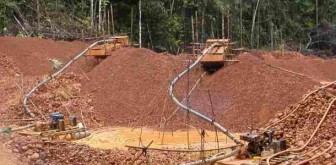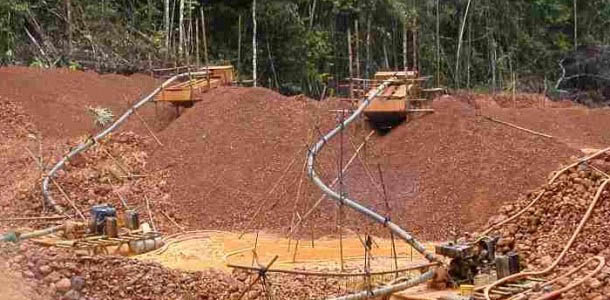A policy of progressive integration of indigenous people into the national life of Guyana over the past fifty year has brought many positive benefits in terms of health standards, the highest birth rate of any ethnic group in Guyana, and improved educational standards. These benefits are reflected in the emergence of an increasing number of professional qualified middle-class Amerindians with properties on the coastal belt; by a growing number of Amerindians in the Guyana Police Force and the Guyana Defense Force, and by a revitalizing of indigenous culture all reflected is a growing influence of Amerindians in the social, political and cultural life of the nation. The political significance of the indigenous community is reflected in the assiduous wooing of the Amerindian vote at election time.
The benefits of indigenous activism over the past three decades include: 1) a marked increase in positive consciousnesses of Amerindian identify and heritage; ii) more effective advocacy on land rights; and iii) a greater sense of solidarity among the different tribal groupings. While this positive picture is encouraging in the short-term, the survival of indigenous identity and communities in their traditional forms is unlikely without a vigorous and focused determination to protect the indigenous way of life driven from within the communities themselves.

In traditional approach to development, successive governments have channeled considerable funds into Amerindian communities in the form of better equipped health centres, secondary schools, roads, solar power, etcetera. The long-term intention is to strengthen the capacity of Amerindians as individuals citizens to integrate into the national community. Left to themselves, these efforts inevitably encourage individuals to seek their own future as ordinary citizens in the national community.
Development has been conceptualized for so long in terms of a linear form of material accumulation, that is becoming extremely difficult to rethink development in terms of community-centred wholeness. Development, narrowly perceived as individual progress and prosperity and measured by individual incomes and jobs, hasn’t worked well for the majority of coastal Guyanese, too many of whom live not much above the poverty line, coastal society is promoting a dysfunctional concept on indigenous communities. In this profit-oriented approach, nature is a resource to be consumed in pursuit of progress.
Subsistence agriculture may be productive in terms of feeding a family but it cannot provide the financial income that modern living requires. The attraction of gold mining as a solution to the problem of livelihoods in indigenous communities is, therefore, powerful. Mining in Amerindian communities and the involvement of individual Amerindians in gold-mining outside of their own communities is extensive. However, mining in its current form is destructive, particularly of the communal dimension of communities. The major question is whether there is a formula for gold-mining which is compatible with positive and constructive development of indigenous communities . a constructive starting point for addressing this proposition is to explore forms of mining that are economically and technologically supportive of the communal nature of traditional community life and with environmental sustainability. A structured process is required to assist communities in such a major undertaking.
In successfully rendering mining advantageous to the community a great deal hangs on the ability of communities to assert and re-habilitate themselves as communities, resisting the individualizing and competitive influences of the national society. Clearly communities need time, space and support to agree on what form of communal life they wish to protect and foster; to re-habilitate their own worldview and to identify the steps necessary to bring this vision into effect. The national society will also need to determine the forms of accompaniment that can be provided to support indigenous communities in this undertaking.
The entry point for re-habilitating community-oriented living as central to vision of the good life is to replace conventional development by a process more akin to rectifying structural injustices, such as reviving indigenous languages, communally-owned forms of economic activity and respect for environmentally-rooted spiritual and cultural beliefs.
Neither the present nor previous administration have resolved the dilemma of how to reconcile economic and environmental priorities. Despite the implied commitment to forest preservation under the low carbon development strategy, in practice, when gold prices were sufficiently lucrative deferred deforestation lost out. Similarly, the mantra of a ‘green economy’ has dominated official pronouncements since the advent of the Coalition Government, but transition from rhetoric to policy has been less forthright. While the terms of the debate may have changed from the previous administration, the fundamental ambivalence, reflected in prioritizing mining over deferred de-forestation remains unresolved. ‘forests’ and ‘mining’ are, in effect, proxy terms for environmental versus economy priorities. Both administrations have taken refuge in Guyana’s traditionally low levels of deforestation relative to the rest of the world. While the dilemma is understandable, the absence of informed discussion and debate of the future of Guyana is not.
In summary, the issue is whether the economy will be integrated in to a dominant environmental frame of reference, or will the opposite occur, in which the environment is subordinate to economic considerations. For the purpose of this Report the specific issue of concern is how the future of indigenous communities factors into the larger debate. The is a complex question: while their relationship with the land is on of the defining features of indigenous communities, the embrace of gold mining is altering that relationship fundamentally. The tension in communities between traditional ways of life and the redefinition of community life by mining reproduces the national level in multiple community contexts.
The major current expression of the threat to communities is their inability to resist or effectively manage the incursion of gold-mining. The cash income generated by gold mining exerts a powerful attraction over communities but at a cost to be counted in terms of abandoned farmlands, creeks polluted by mercury and sediment, an influx of strangers, along with the social ravages of alcohol and drugs. The impact of gold-mining on Amerindian women is particularly profound. They must assume responsibility for the family when the husband and sons are mining in remote areas; maintain farmlands and manage the household. Women are vulnerable to sexual violence and to itinerant miners setting up short-term liaisons while maintaining families on the coastland. Family divisions are intensified by the growing trend of women finishing secondary school, thereby becoming better educated than the males, significant number of whom abandon education for the mines. Educated women tend to look for educated husbands.
Village Councils are ill-prepared to resist the economic, social and political pressures generated by mining which are translated into sources of patronage and bribery. Communities are equally ill-equipped to negotiate their best interests amid the complex national and global demands generated by climate change-related concerns.
The future survival of indigenous peoples as distinct communities within the national life will be determined by their success in sustaining three major facets of Amerindian life, namely: land , language and cultural practices. In Guyana, all three are in crisis at the present time.
Reprinted from Impact of Mining
Survival Strategies for Interior Communities in Guyana
Guyana Human Rights Association
November 2016






